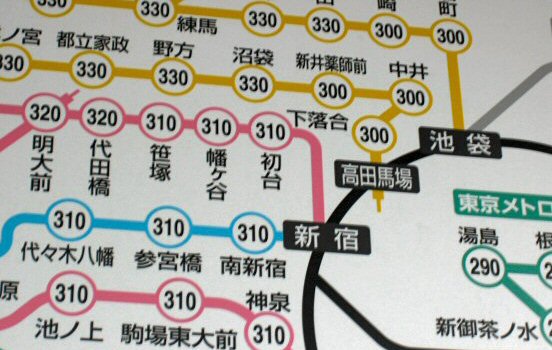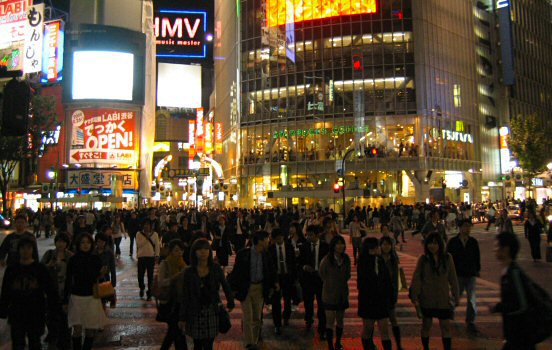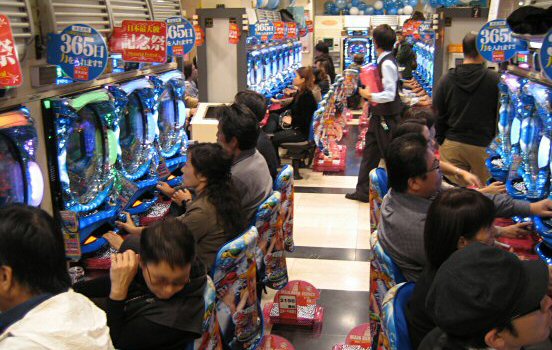I walk alone through the streets of Tokyo, like a benign Godzilla without the sharp teeth. Everywhere I go, people stop in their tracks to stare at the six-foot-five gaijin. I do a “smile and wave” like the penguins in Madagascar movie, and start humming on the song “Big in Japan” by Alphaville.
 Nothing to see here, just Godzilla passing through Harajuku.
Nothing to see here, just Godzilla passing through Harajuku.
After deciphering the glyphs of the subway map I soon find myself in Shibuya and walk across the famous crossing, the busiest pedestrian walkway in the world. I am surrounded by thousands of strangers who don’t know my name and don’t give a damn.
 Tokyo subway map. Clear as mud.
Tokyo subway map. Clear as mud.
I order a coffee on second floor and sit by a window seat facing the crossing, sipping my espresso while trying to study the map in my worn Lonely Planet. The crossing below flows like a constant sea of humanity in an ever-changing pattern.
 People are people at the busy Shibuya crossing.
People are people at the busy Shibuya crossing.
Just a few subway stops to the north, Shinjuku feels like another world. The west side consists of tall skyscrapers, clean but boring. I try to sneak into some of the cool buildings including the Cocoon, but the security guards unfortunately spot me from a mile away (surprise) and kindly advise me to talk to the hand, Godzilla be damned.
I soon get bored at seeing the immaculate palms of security, so I explore the eastern part of Shinjuku as the sun set. This is a completely different story from the stern west side, since it is Tokyo’s liveliest night spot and the location of the notorious district Kabukicho. I walk along the neon-drenched street of Yasukuni-dori Ave, where Bill Murray’s character arrived by taxi in the first scenes of Lost in Translation, and dive headfirst into the maze of small alleys.
 Passing through a noisy Pachinko hall in eastern Shinjuku. Imagine the smell.
Passing through a noisy Pachinko hall in eastern Shinjuku. Imagine the smell.
This is the Tokyo I was looking for. A shotgun blast of neon, Pachinko and caffeine-fueled chaos. An full-blown assault on your senses. The only thing missing is a large Atari neon sign and a bit of rain to make my Blade Runner fantasy complete.
There are dodgy places found in every nook and cranny in Kabukicho. I pass through noisy Pachinko halls and dodge into a Manga Kissa, where people rent booths to read manga, browse the internet and occasionally take a nap.
Tokyo is a wonderworld of mystery and frustration. I try to immerse myself in their culture, but it feels very clear that I don’t belong here. Everyone is very polite and “irrashaimasse” is hanging in the air as soon as they see me on the horizon, but as a gaijin one is forever doomed to be left outside their secrets. Especially if you’re tall enough to cash your head into their delicate ceiling ornaments.
The seedy underbelly of Kabukicho includes the Golden Gai area, where I quickly discover that there are lots of places that don’t want foreigners to enter their crammed spaces. A tall moody stranger dressed in black, what could possibly go wrong?

Comments
No comments yet.
Leave a reply